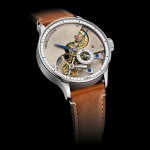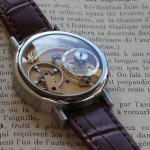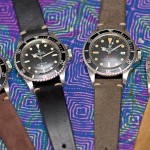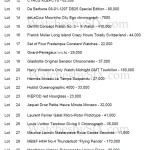A Master Gunsmith Makes a Watch by Hand
Dewey Vicknair remakes a vintage Omega calibre.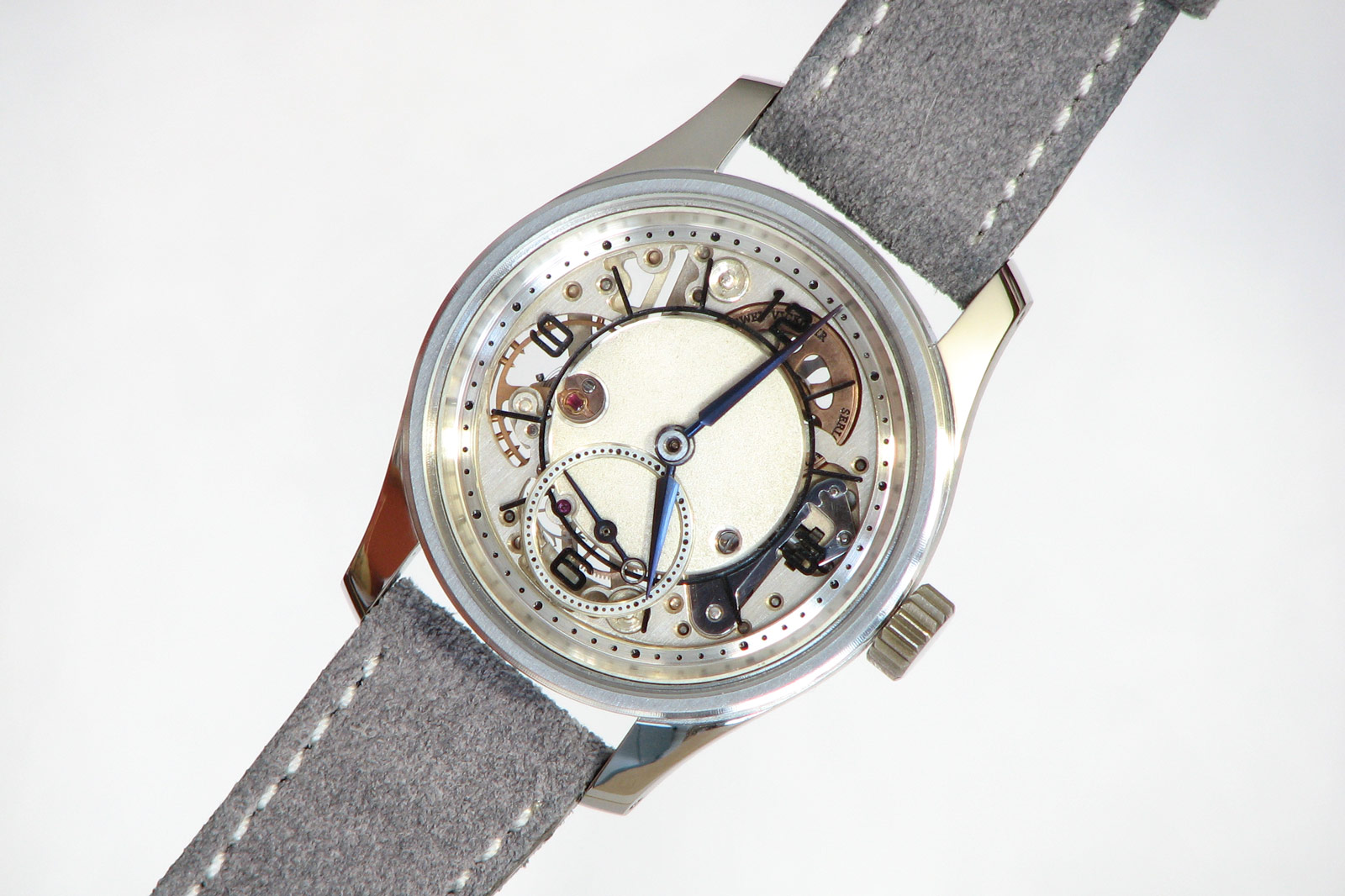
Based in Pennsylvania, Dewey Vicknair is a respected gunsmith who specialises in restoring rifles and shotguns, and has been doing so for decades, gaining an esteemed reputation in the process. Now in his mid-fifties, he is also a self-taught watchmaker who has been performing watch servicing on the side. Recently Mr Vicknair made the leap from fixing watches to making one.
Mr Vicknair explained the genesis of his first watch: “When I saw your stories about Atelier de Chronometrie and what they do with vintage Omega movements, I was inspired.” His inaugural creation is a hand-wound wristwatch of his own making, literally. Although the movement started out as a 1950s Omega cal. 266, Mr Vicknair reworked majority of it and made many parts from scratch, including the going train bridge, as he did for the case, dial, and even the gasket for the crown tube.
Because he made most of the parts himself, Mr Vicknair had to fabricate the equipment required to make the parts, including a cutter for the gasket and a screw holder for black polishing. He even did the silver plating of the movement parts himself. It is an unexpected accomplishment for a first-time watchmaker.
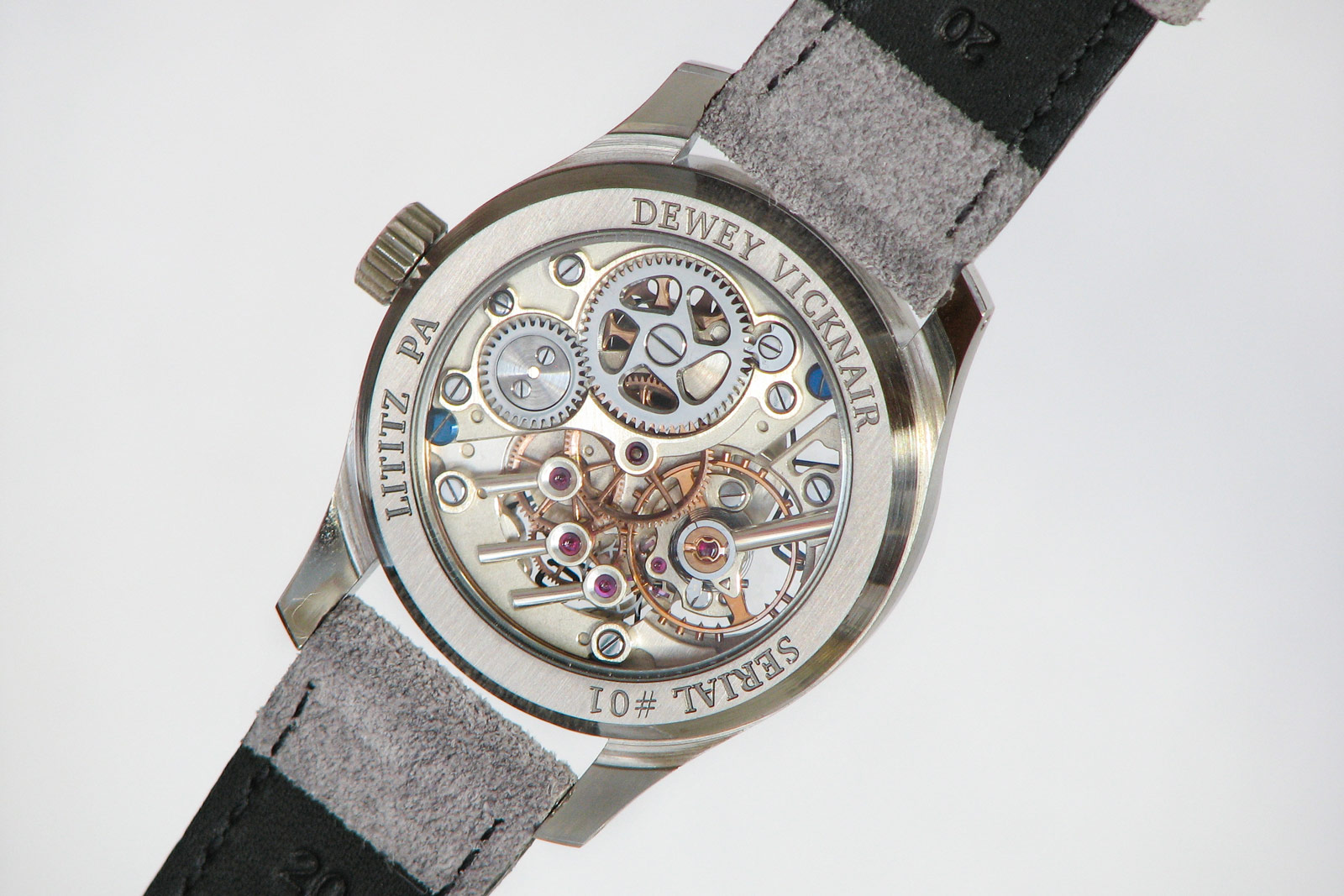
Initial thoughts
Ordinarily I would be sceptical of an unknown watchmaker seeking publicity for a new project with a five-figure price tag. But a few things changed my mind. One was seeing Mr Vicknair’s unusually thorough documentation of his production process, which is almost entirely manual – even the machines are the old-school sort operated by hand.
More importantly, I discovered he is one of the most respected gunsmiths in the United States. Searching online for his name turns up dozens of mentions on rifle and shotgun forums praising the quality of his work and knowledge. Even though his watch venture is new, Mr Vicknair’s reputation for delivering quality work is reassuring.
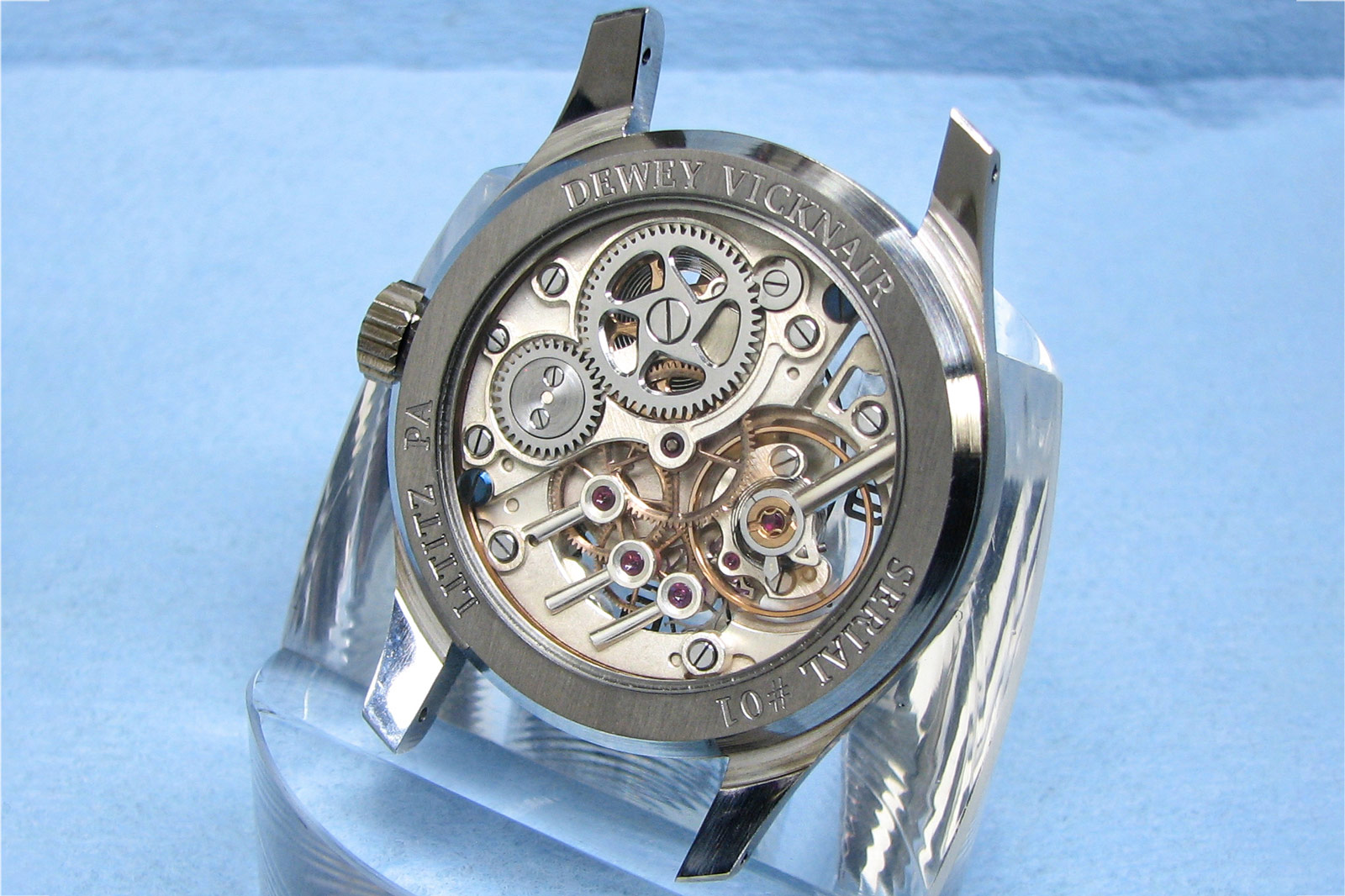
Mr Vicknair’s watch is impressive as the first creation of someone without formal watchmaking training. Take the tubular cocks for the going train (which are actually all integral to the bridge) and balance wheel, or the black-polished steel parts. The open-worked barrel ratchet wheel is equally fine work. As much of a testament to his skill is the fact that not only did Mr Vicknair produce the watch, he also made some of the tools required to produce the watch parts.
Granted, it could do with refinement in terms of design and finishing. For instance, I would tweak the dial design so it is less reminiscent of Petermann Bedat, at the same time doing away with the clear acrylic dial plate since the material feels out of place on an artisanal and expensive watch. That said, the watch certainly possesses a great deal more character and craft than faux-artisanal watches that cost more. I hope Mr Vicknair continues to pursue his watchmaking.
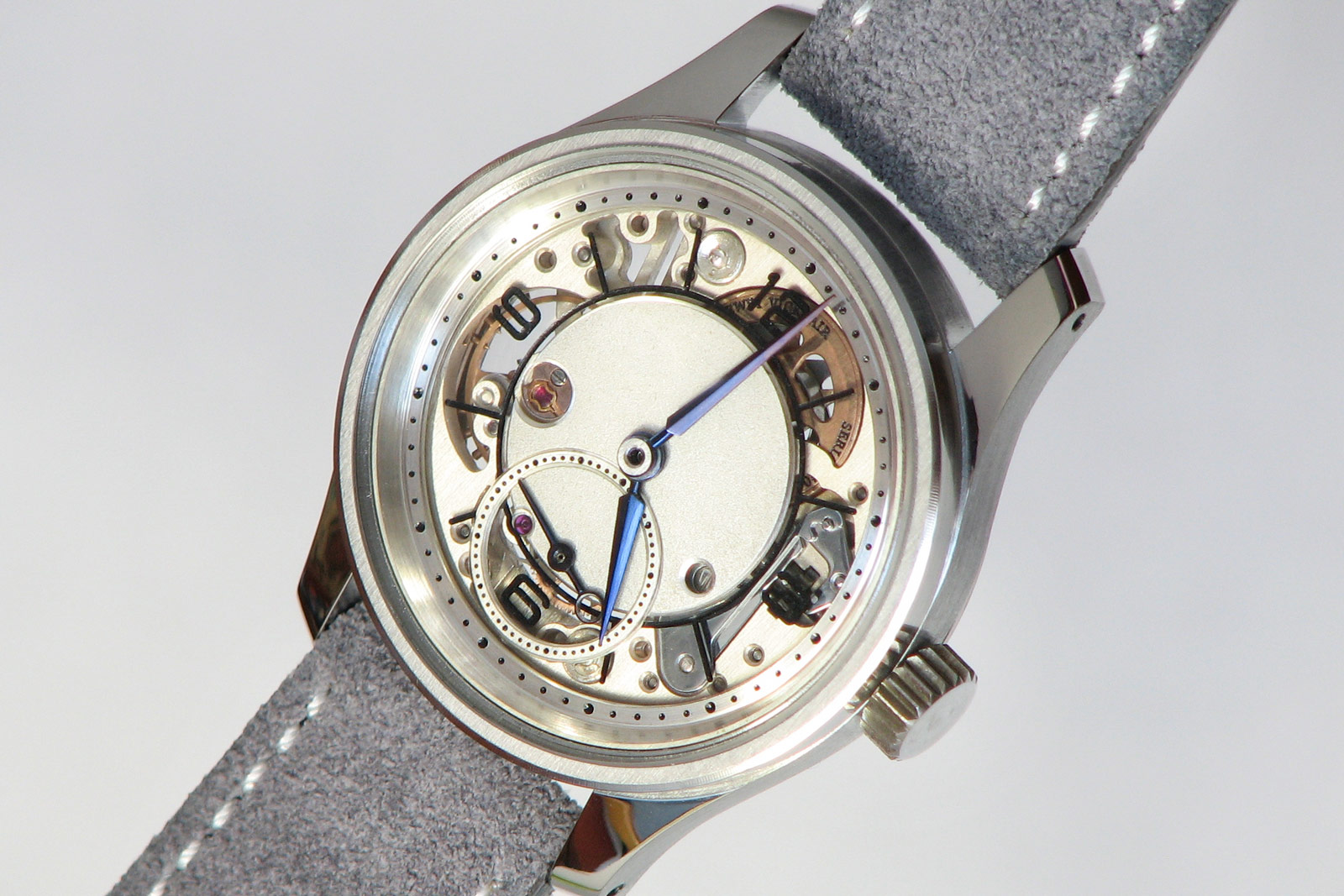
Making a watch from scratch
Mr Vicknair describes his work well on his website, it is the “making of a wristwatch from raw material, entirely by hand… design, manufacture of every part, polishing, plating, all of it is done here, by me.” He photographed almost every step of the process, resulting in a detailed photoessay that will be interesting to those inclined towards manufacturing and finishing.
A few aspects of his manufacturing process stand out. Starting with a block of 304L steel, he mills the case, bezel, and back, then finishes each component, including engraving the case back with a manually-operated pantograph.
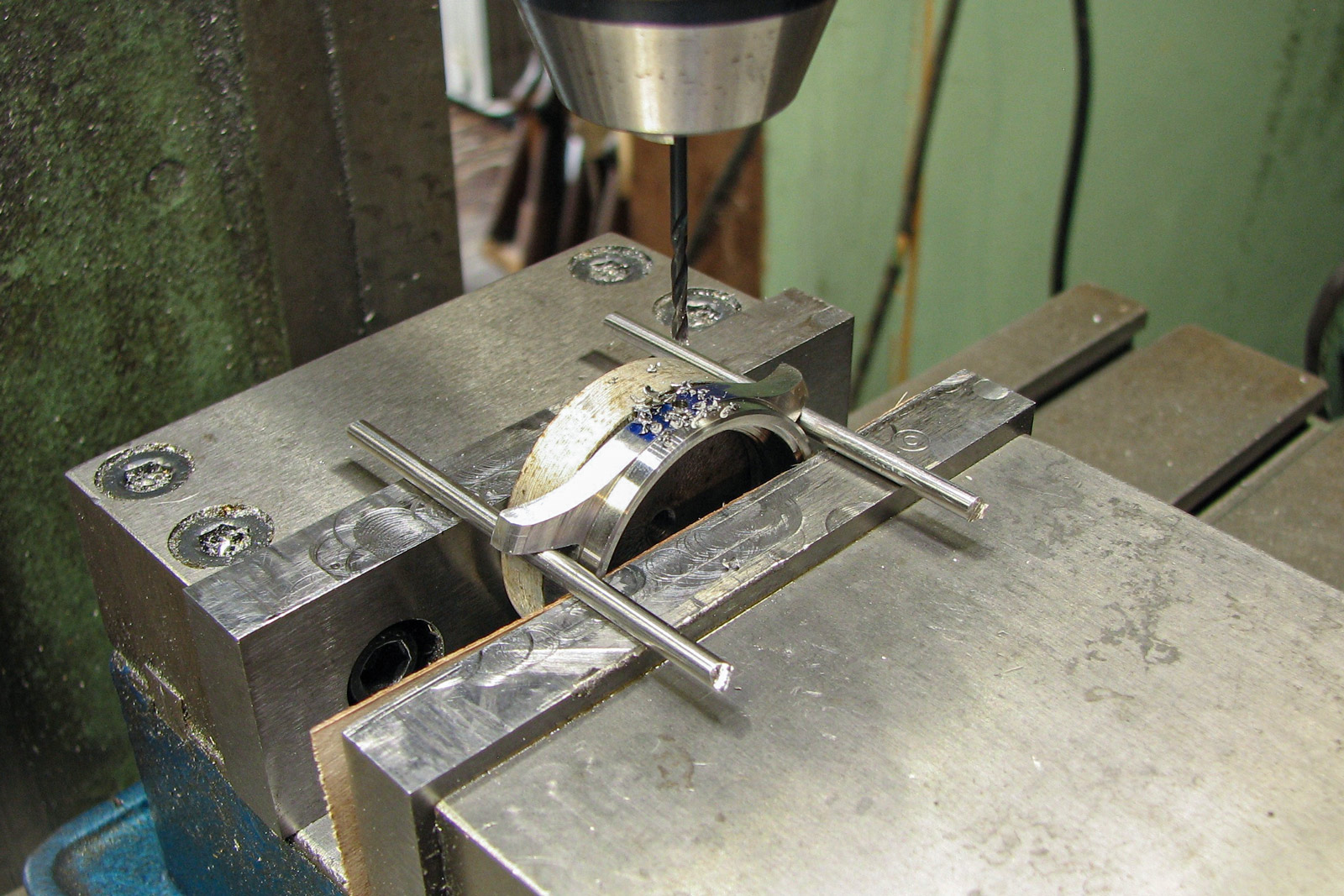
Drilling the tube for the stem
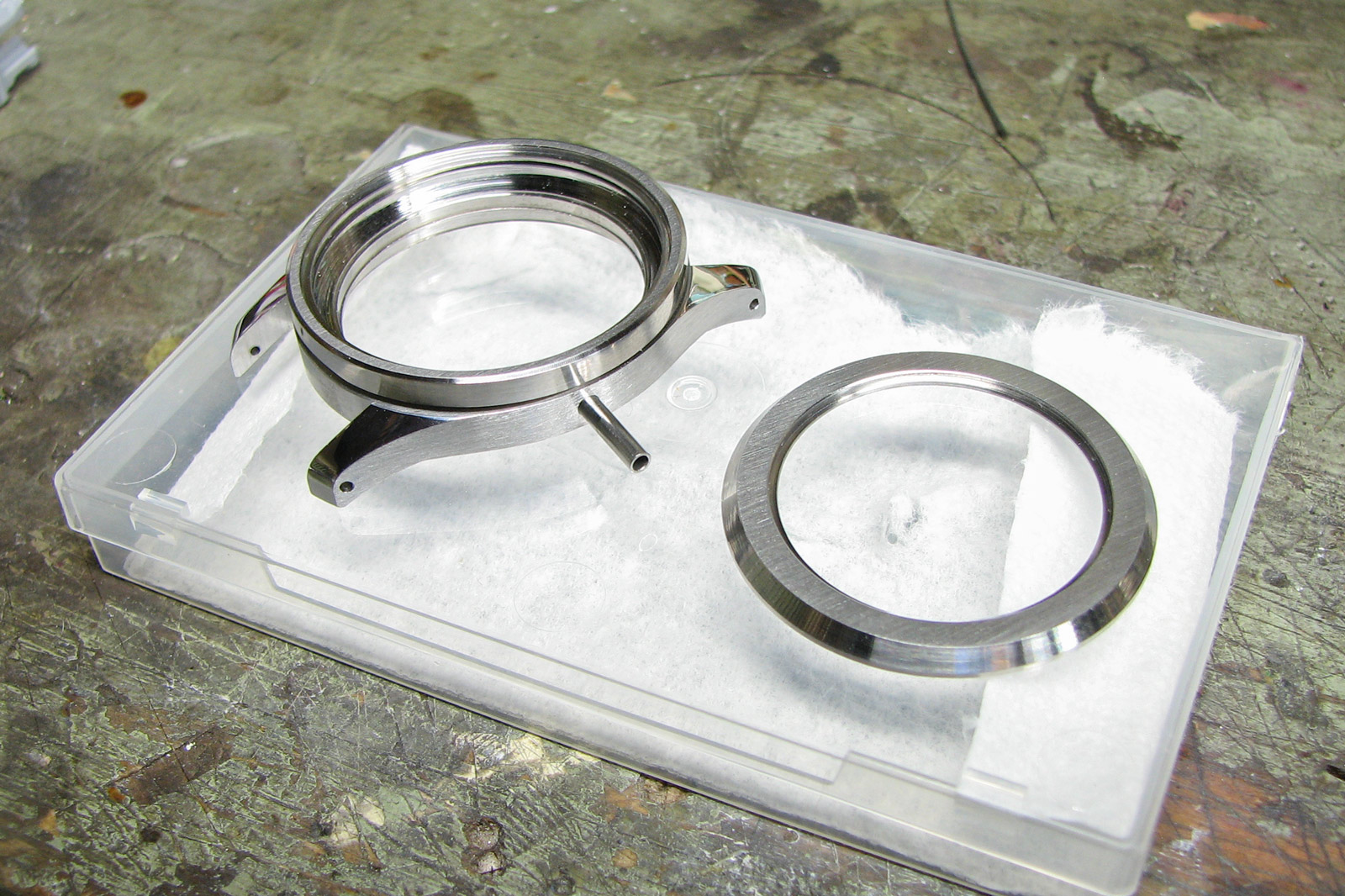
In fact, Mr Vicknair even made the silicone gasket for the crown – as well as the cutter to cut the gasket in the exact size required to fit inside the crown and around the stem.
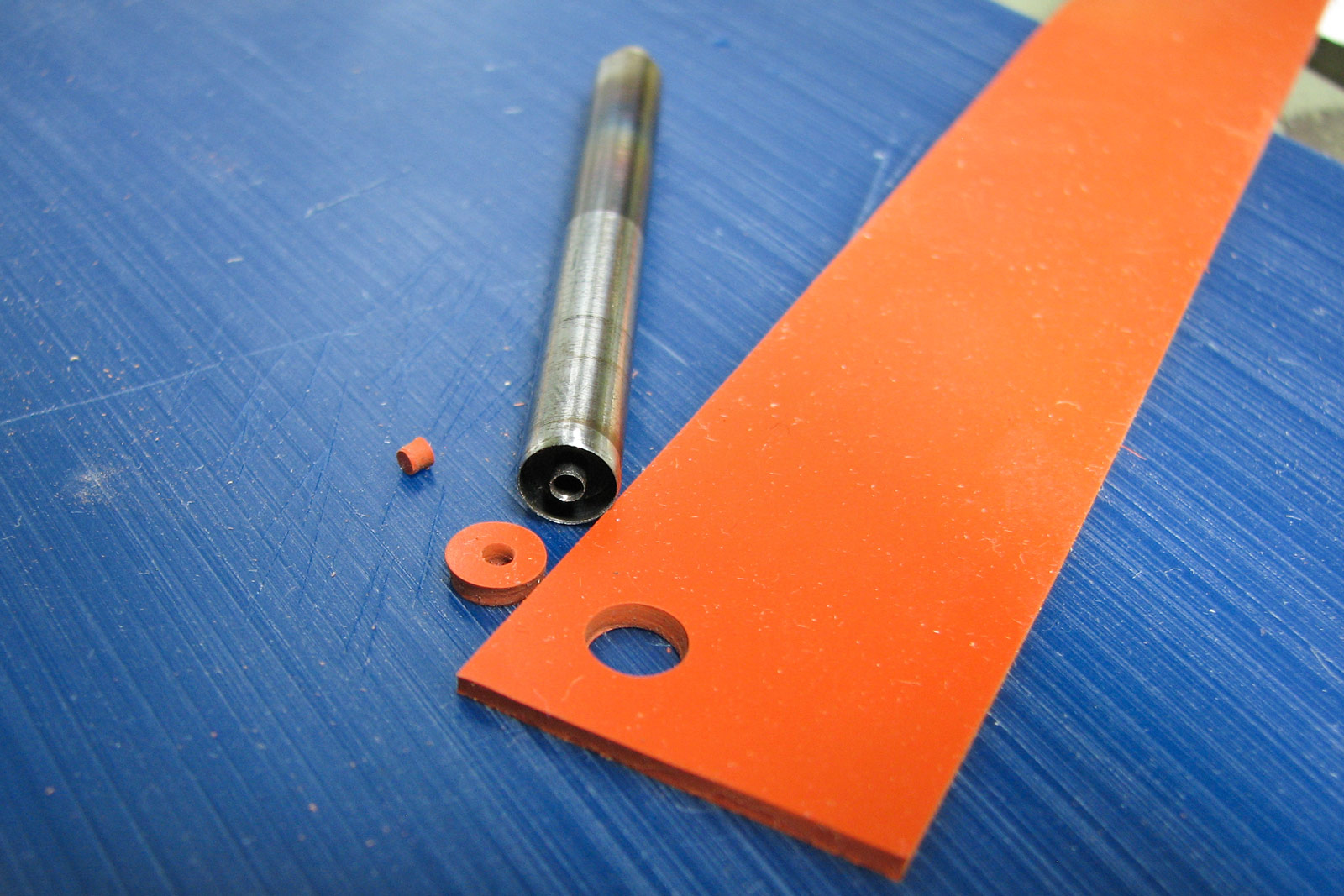
The crown gasket with its cutter
Each of the hands are similarly made from scratch. They are made from another steel alloy that takes better to heat treatment, and begin as a small bar of steel. The bar is milled, cut, filed, polished, and finally blued.
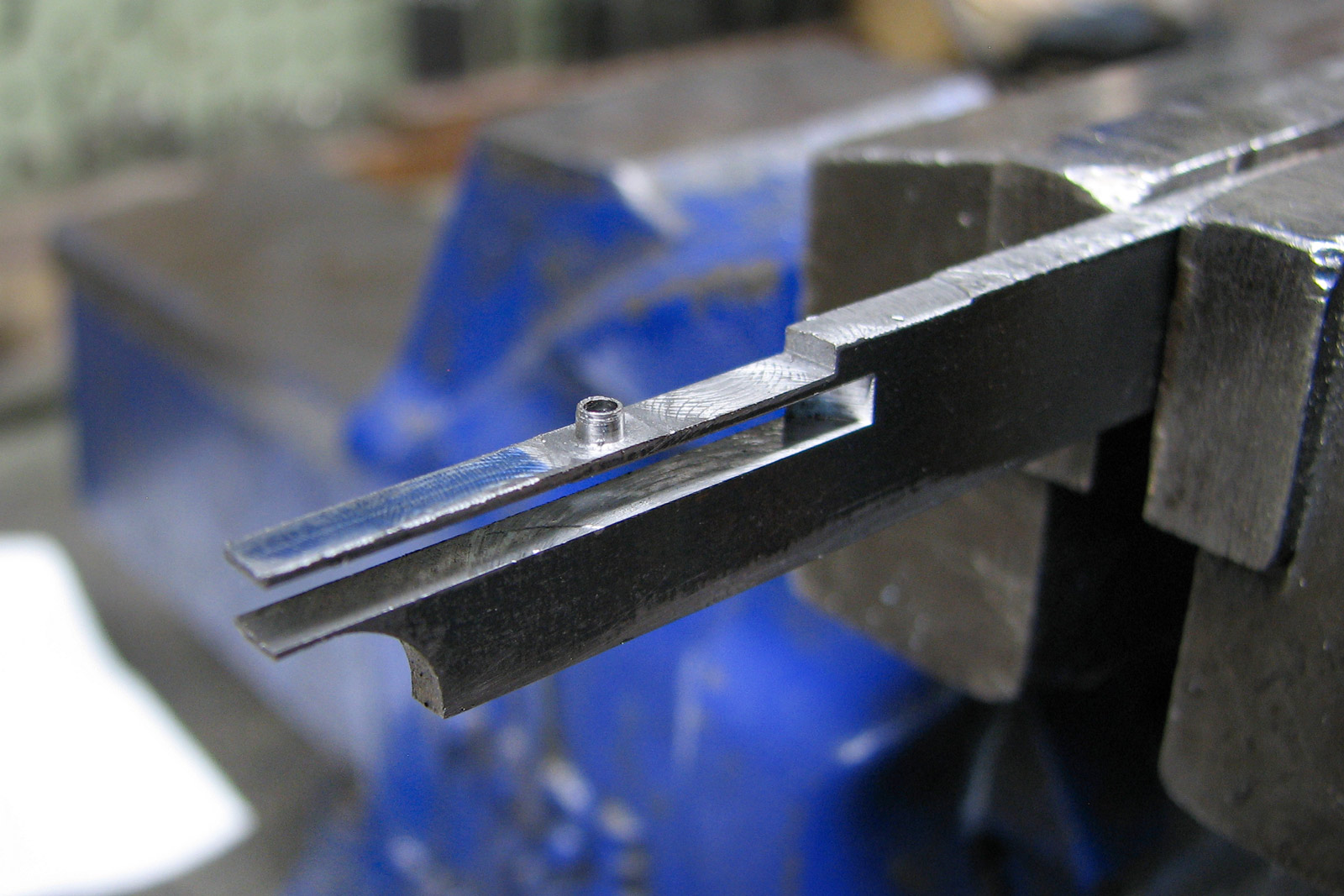
The raw hand blank after drilling the hole for the pinion
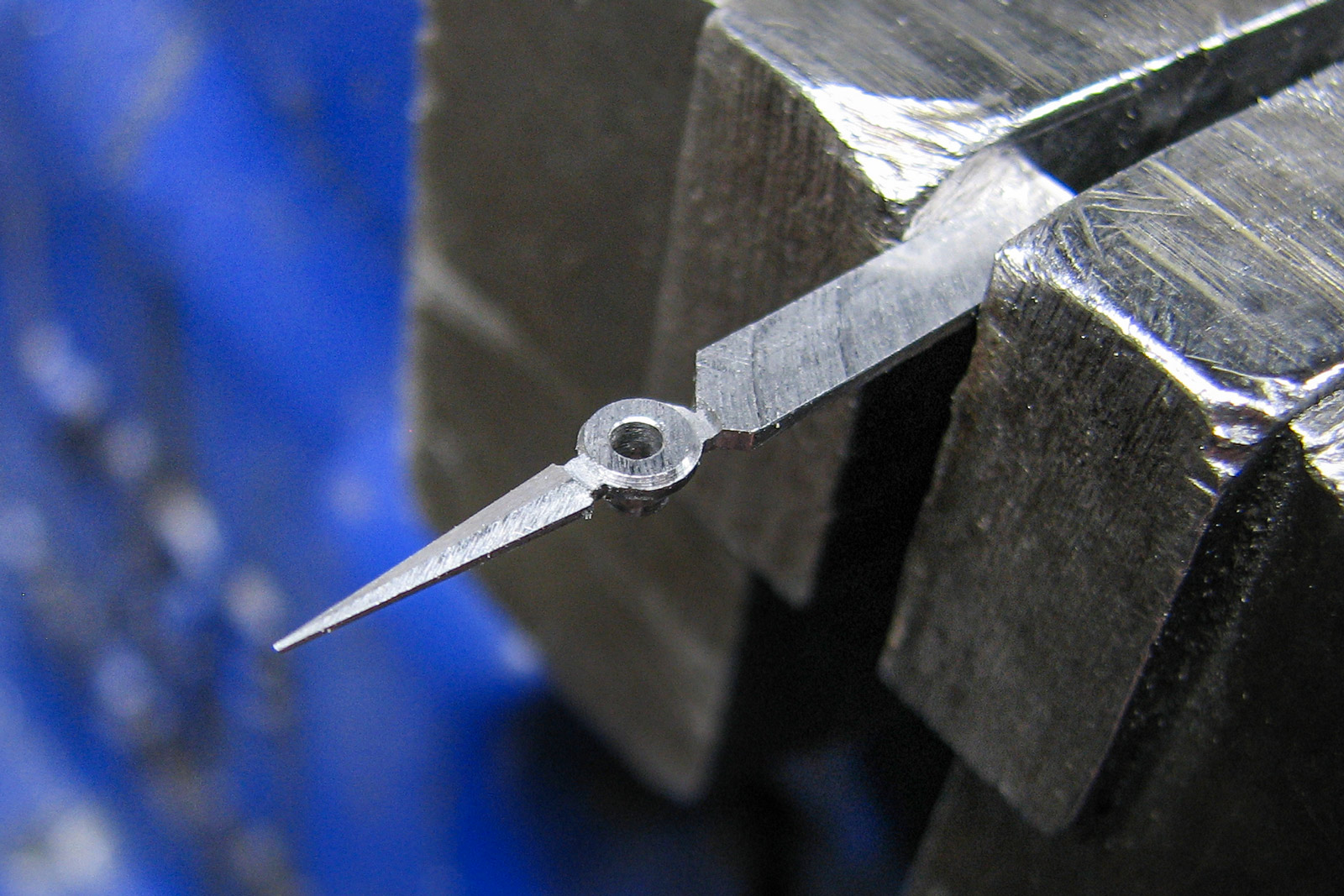
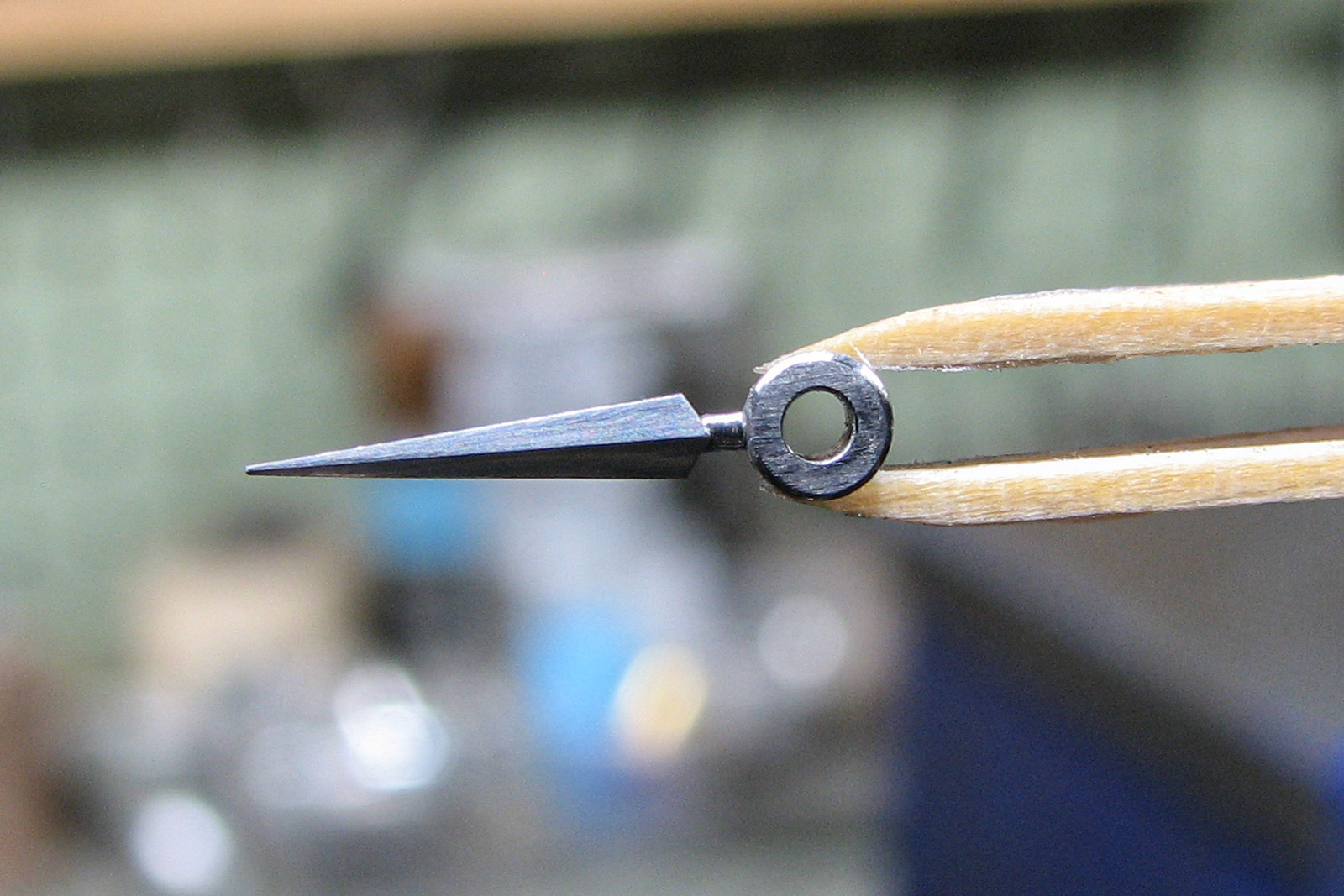
The finished hand before decoration and blueing
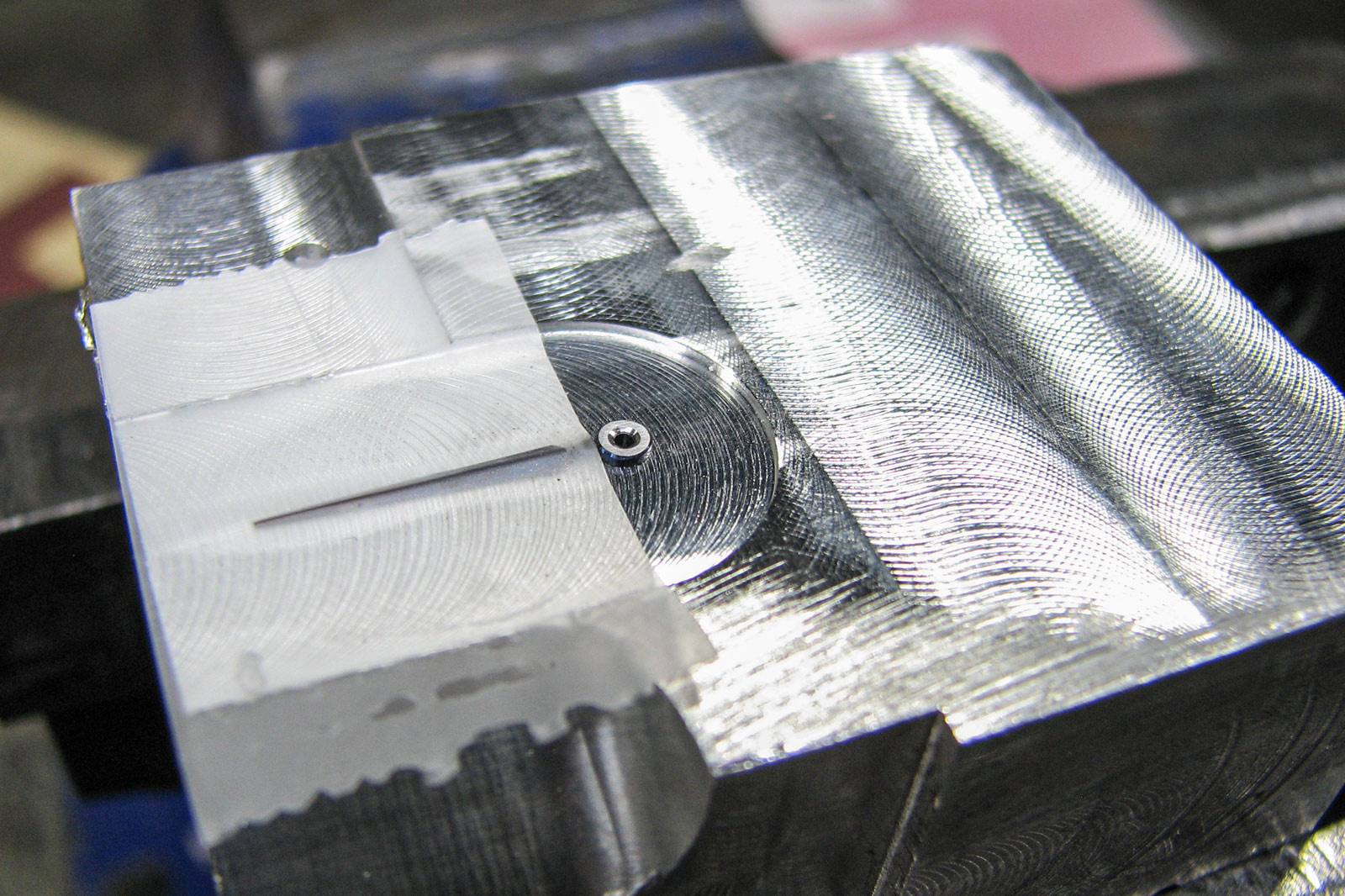
Polishing the different parts of the hands
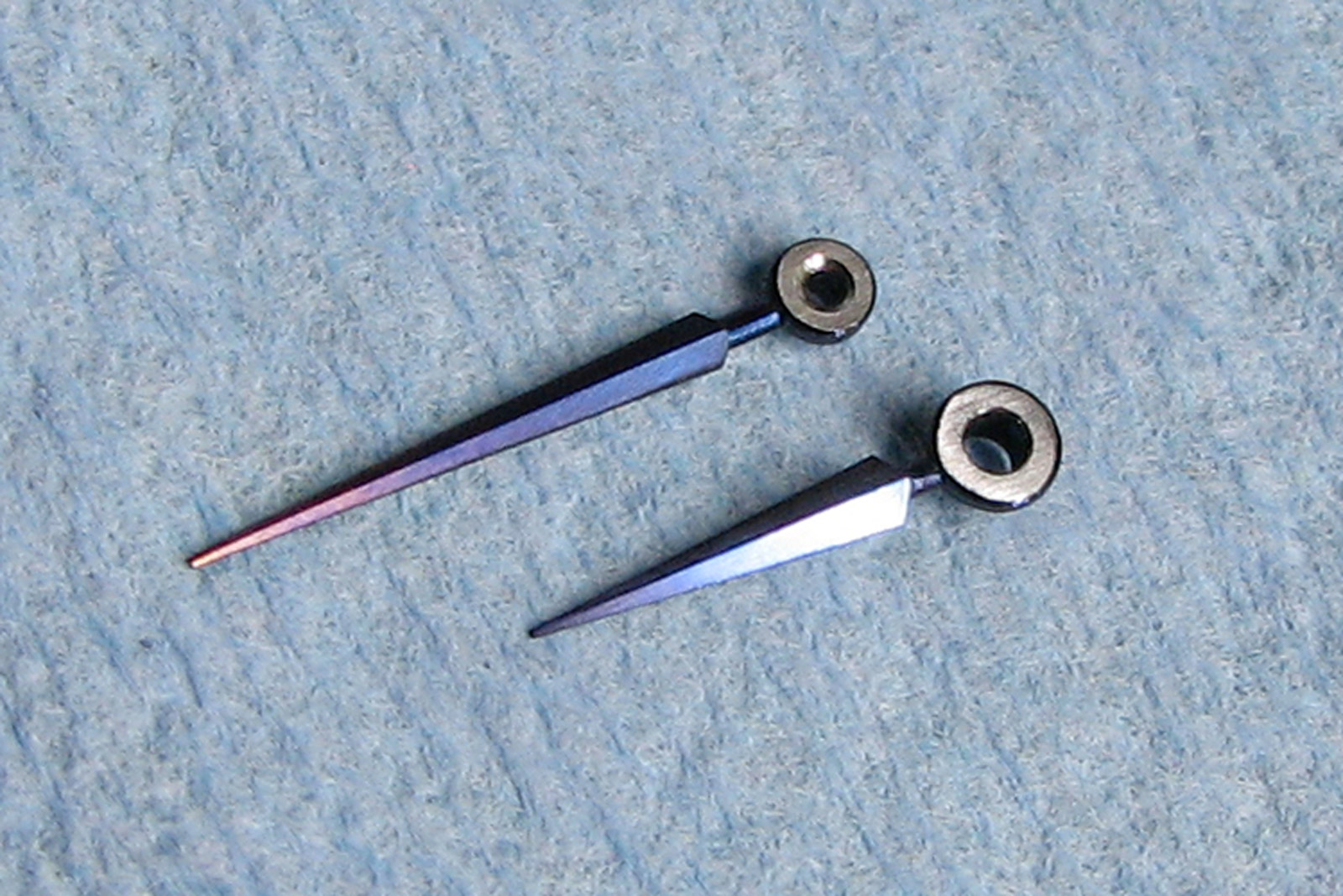
After blueing the hands
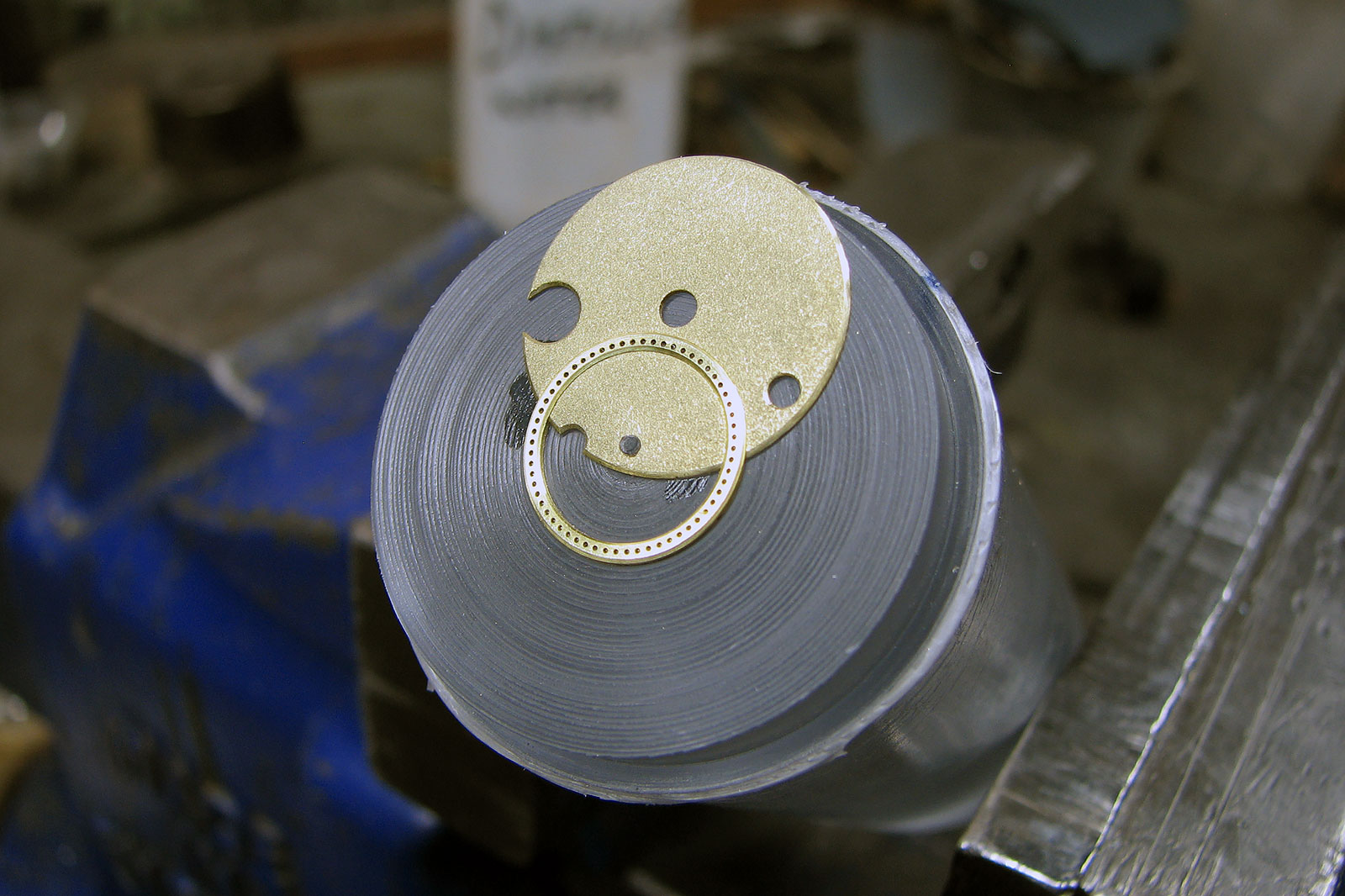
Mr Vicknair produced the dial plate and chapter ring on a lathe
The movement was originally an Omega cal. 266, a workhorse calibre used in a range of Omega watches from the 1940s to the 1960s. Mr Vicknair, however, made extensive modifications to the movement, including skeletonising the base plate and barrel bridge. The bridges for the going train and balance, which feature rounded arms, were both made from scratch.
Other components retained from the original calibre were decorated, like the wheels of the going train. According to Mr Vicknair, the only part of the movement that remains original and unmodified is the balance wheel and hairspring.
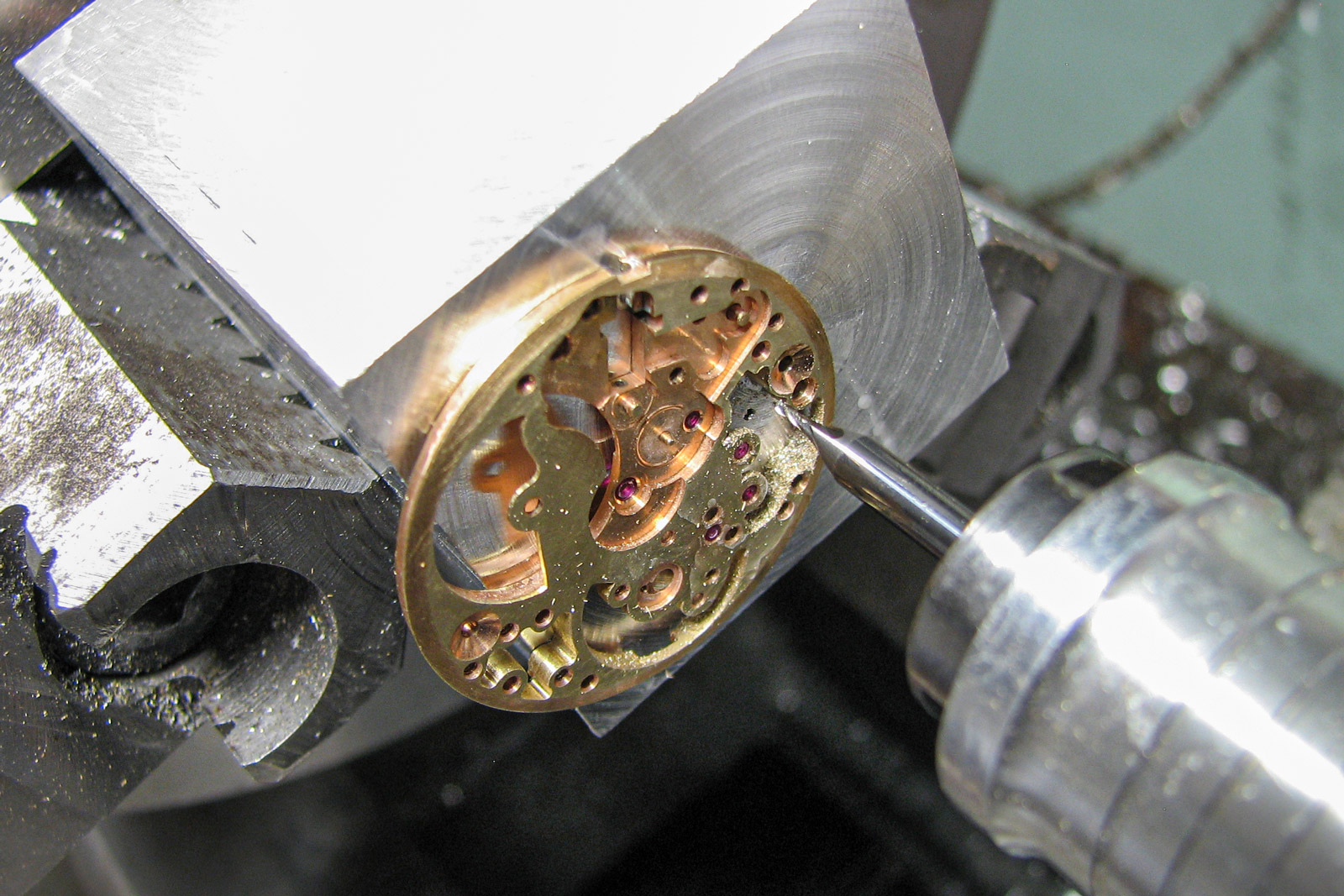
Milling openings into main plate for skeletonisation
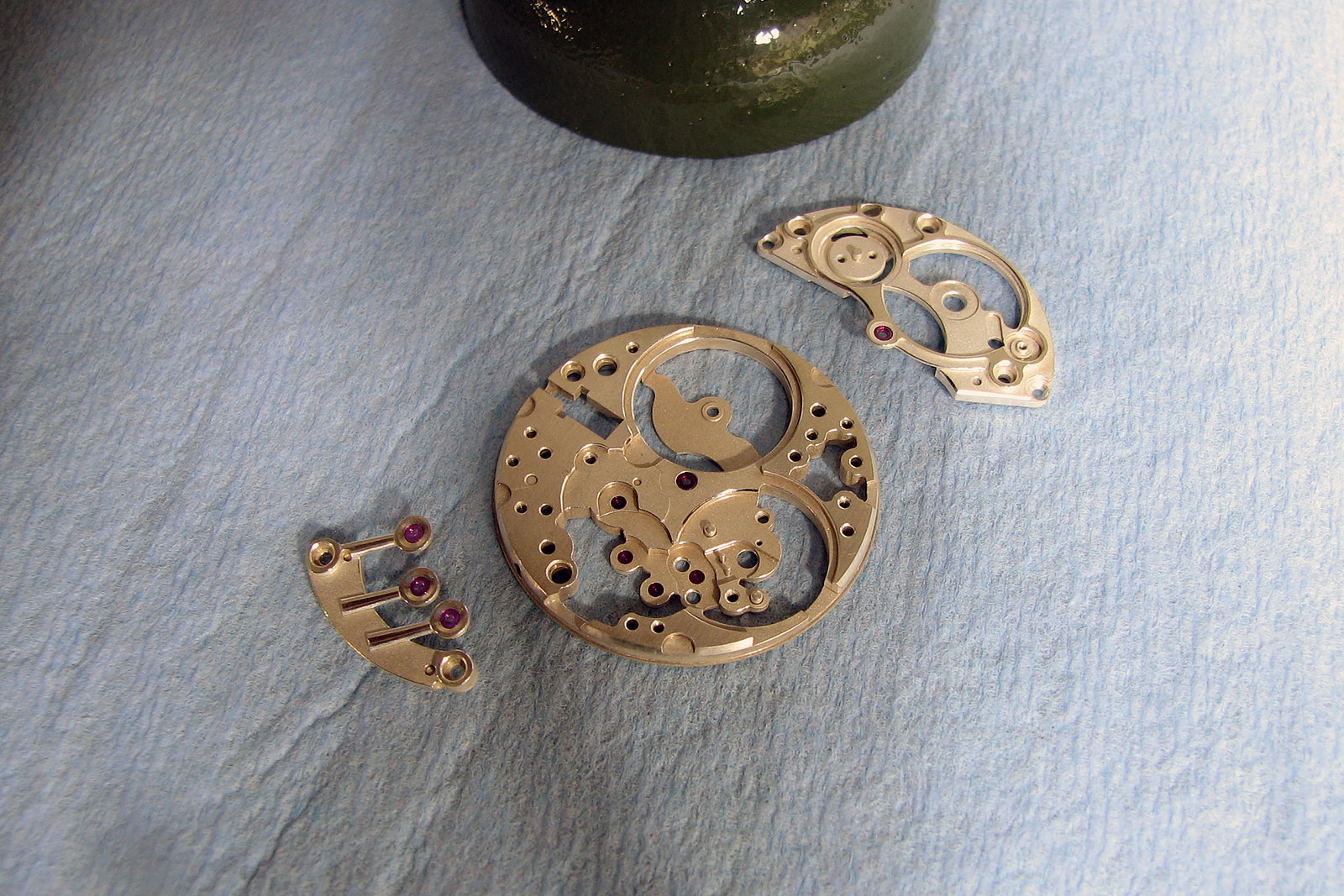
The open-worked base plate that is original, along with the going train and barrel bridges that were made from scratch
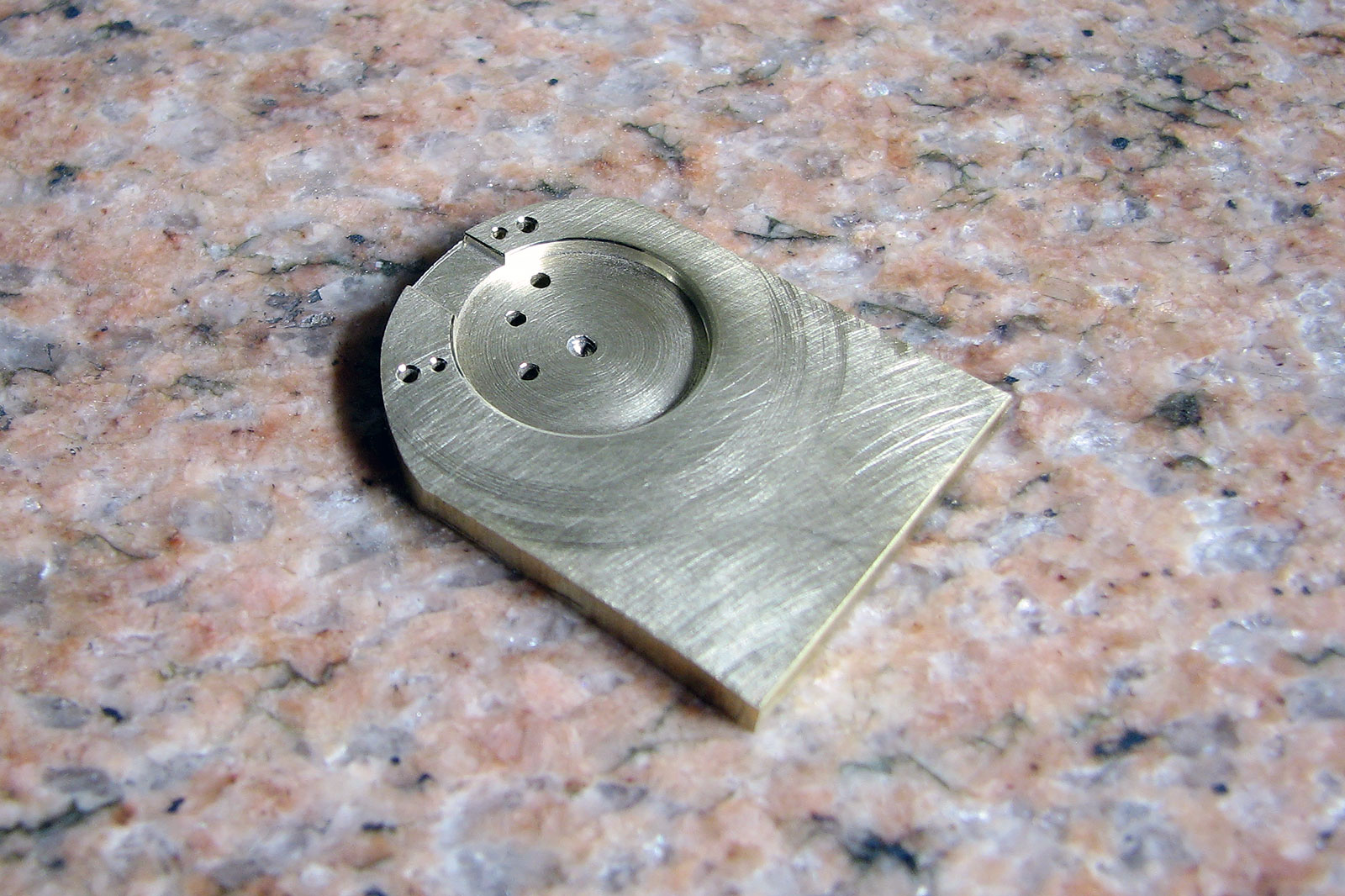
The half-finished going train bridge, which starts as a plate of brass that is milled into shape
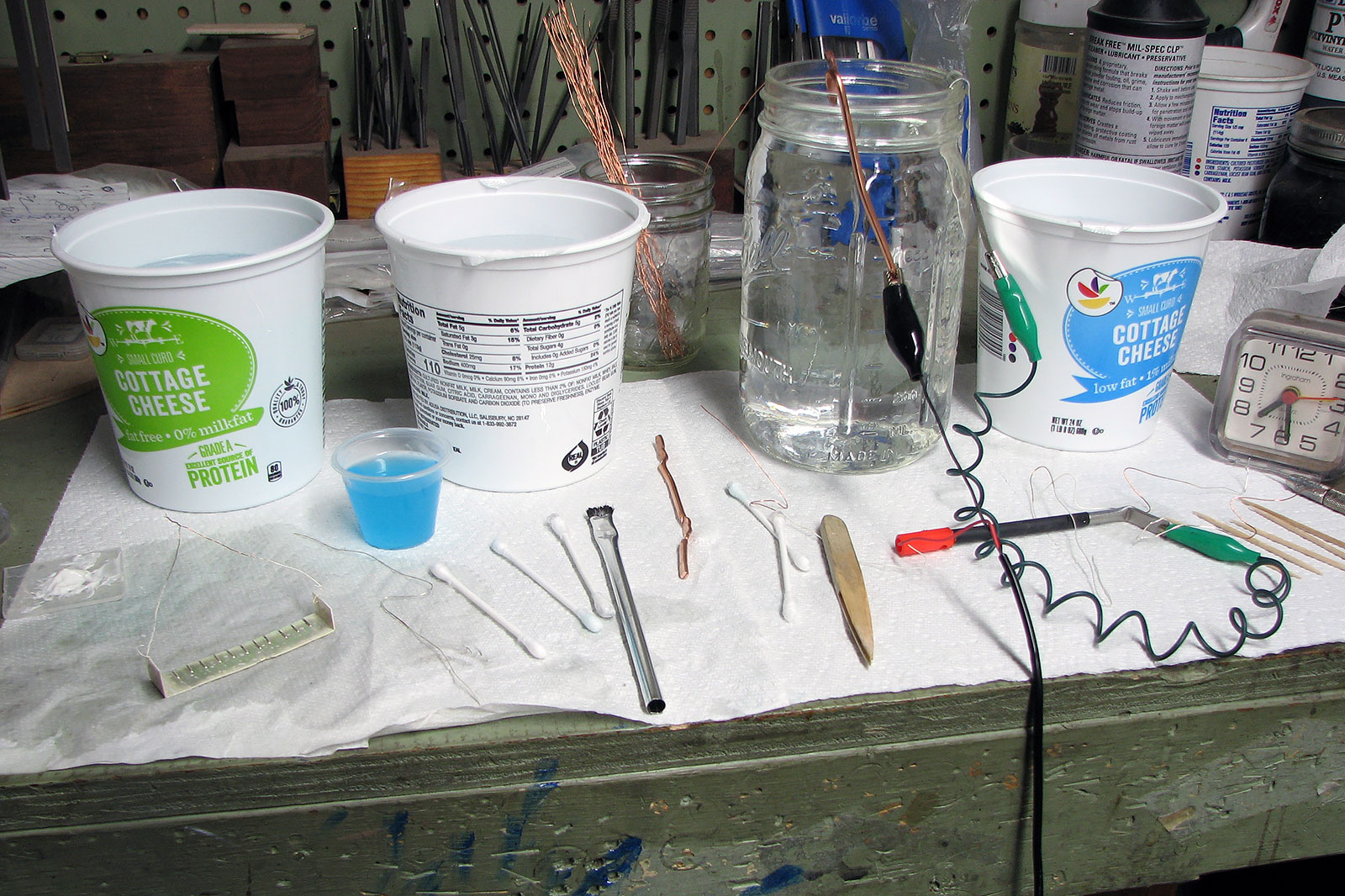
Even the silver plating of the bridges and base plate was done by Mr Vicknair
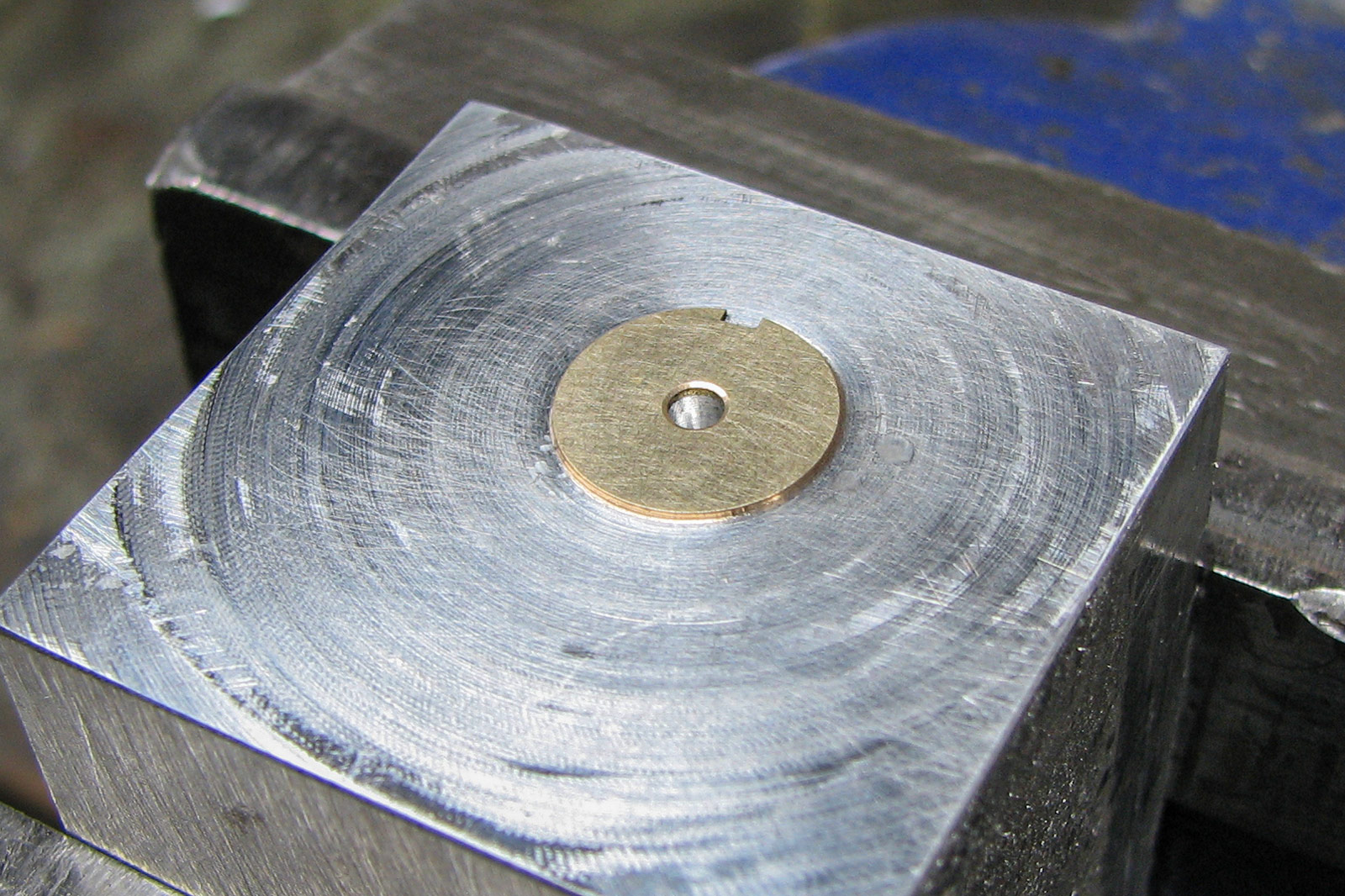
The barrel cover in its raw form
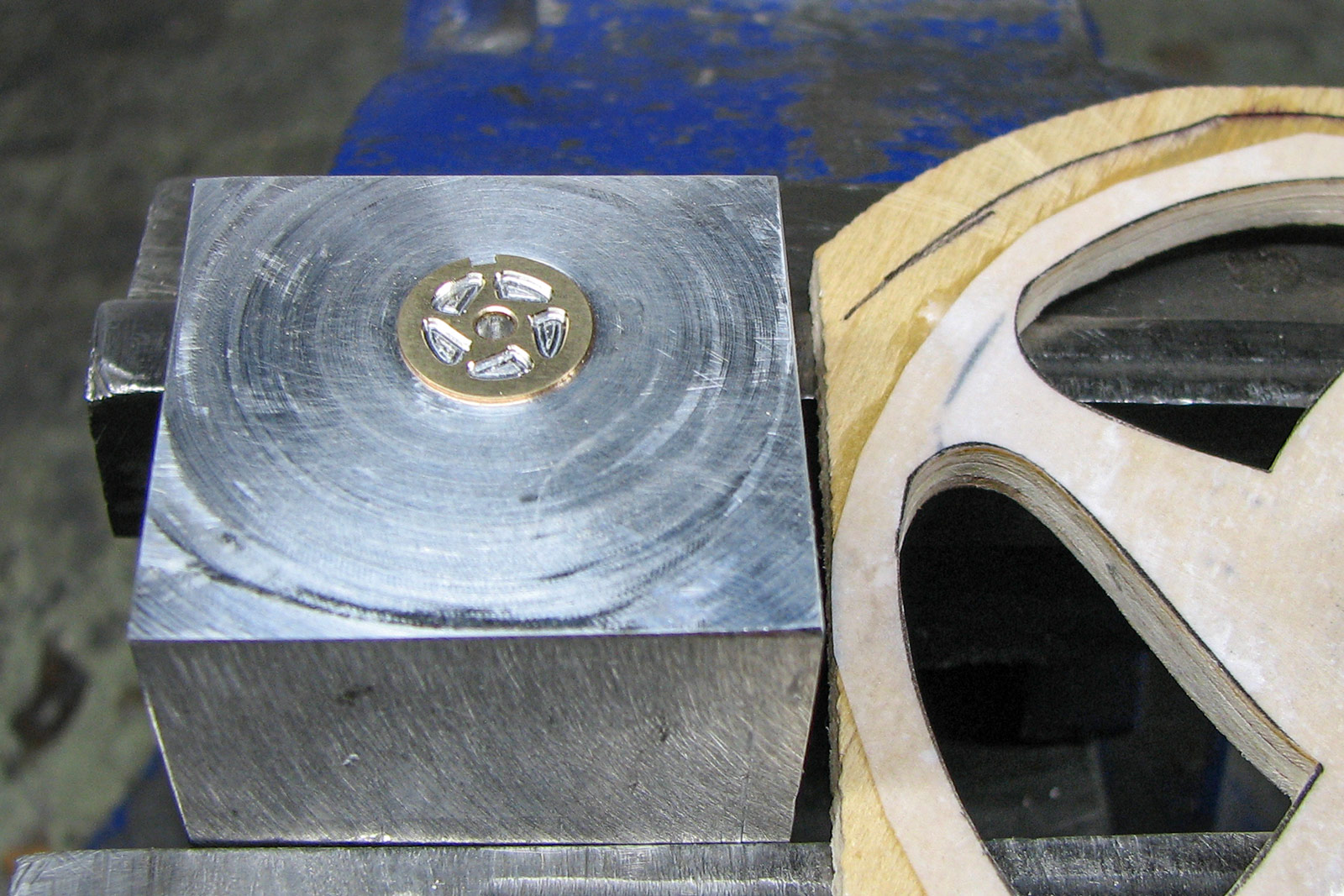
The barrel cover is cut with a pantograph
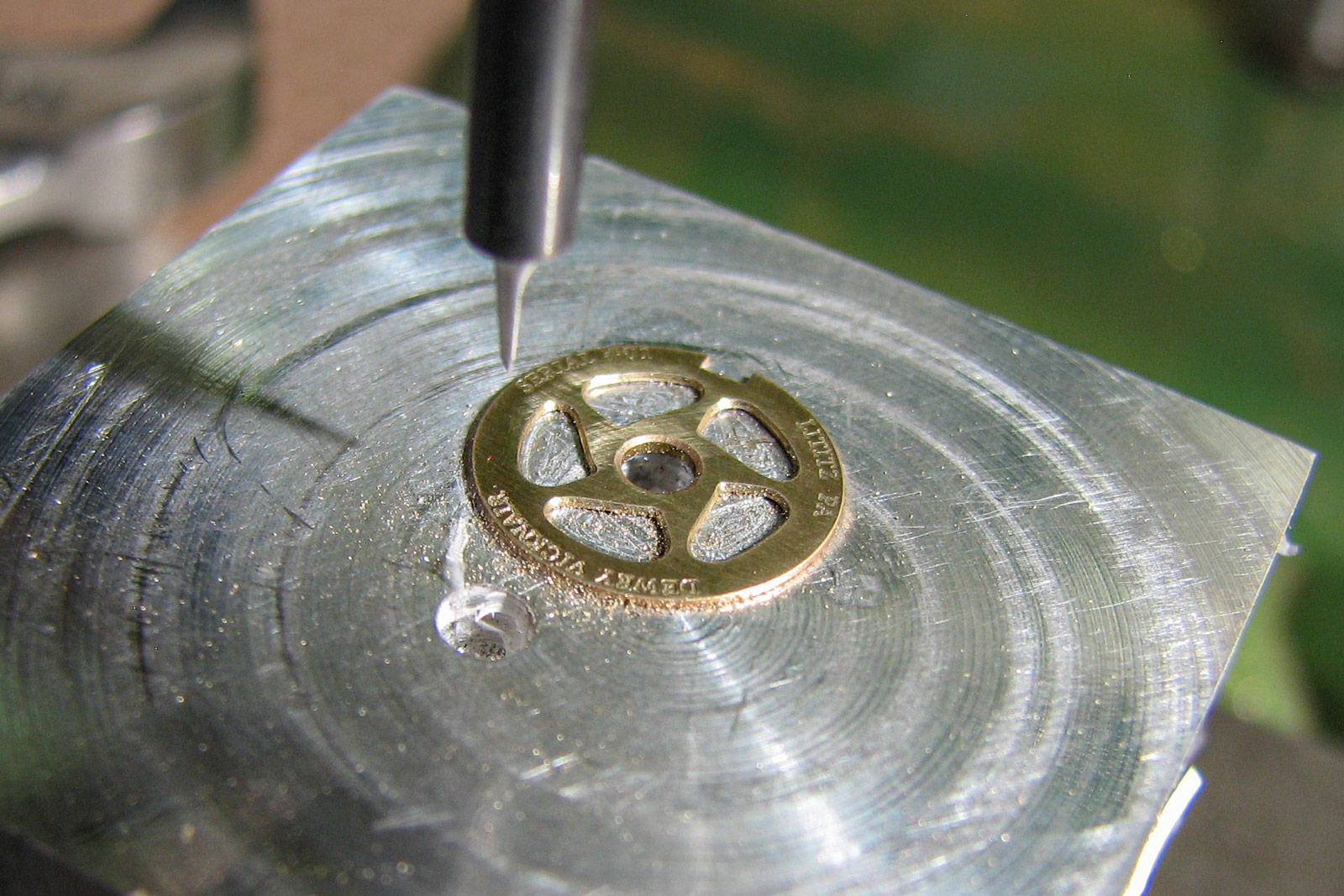
And engraved with a pantograph
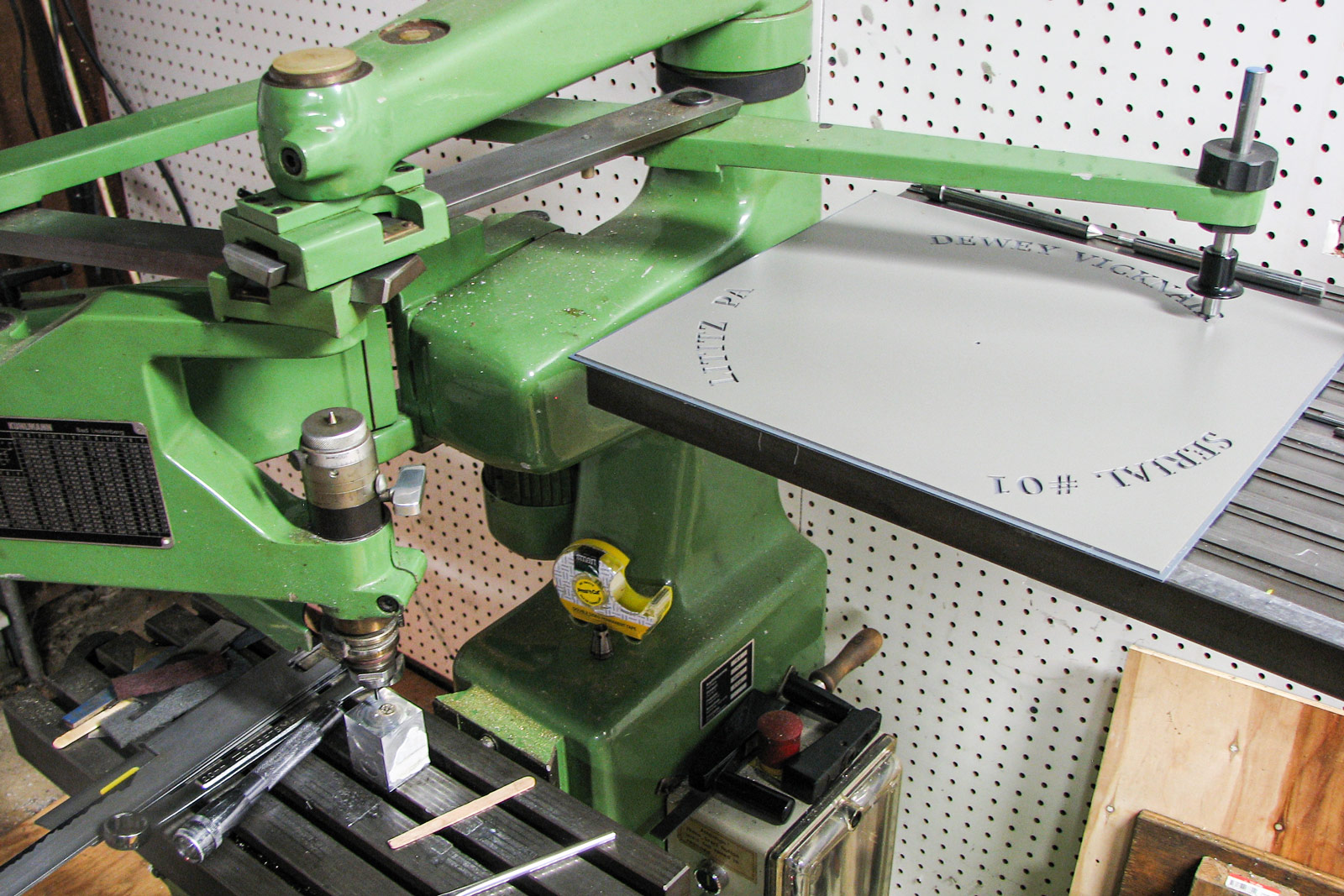
The pantograph used to engrave the case back and ratchet wheel
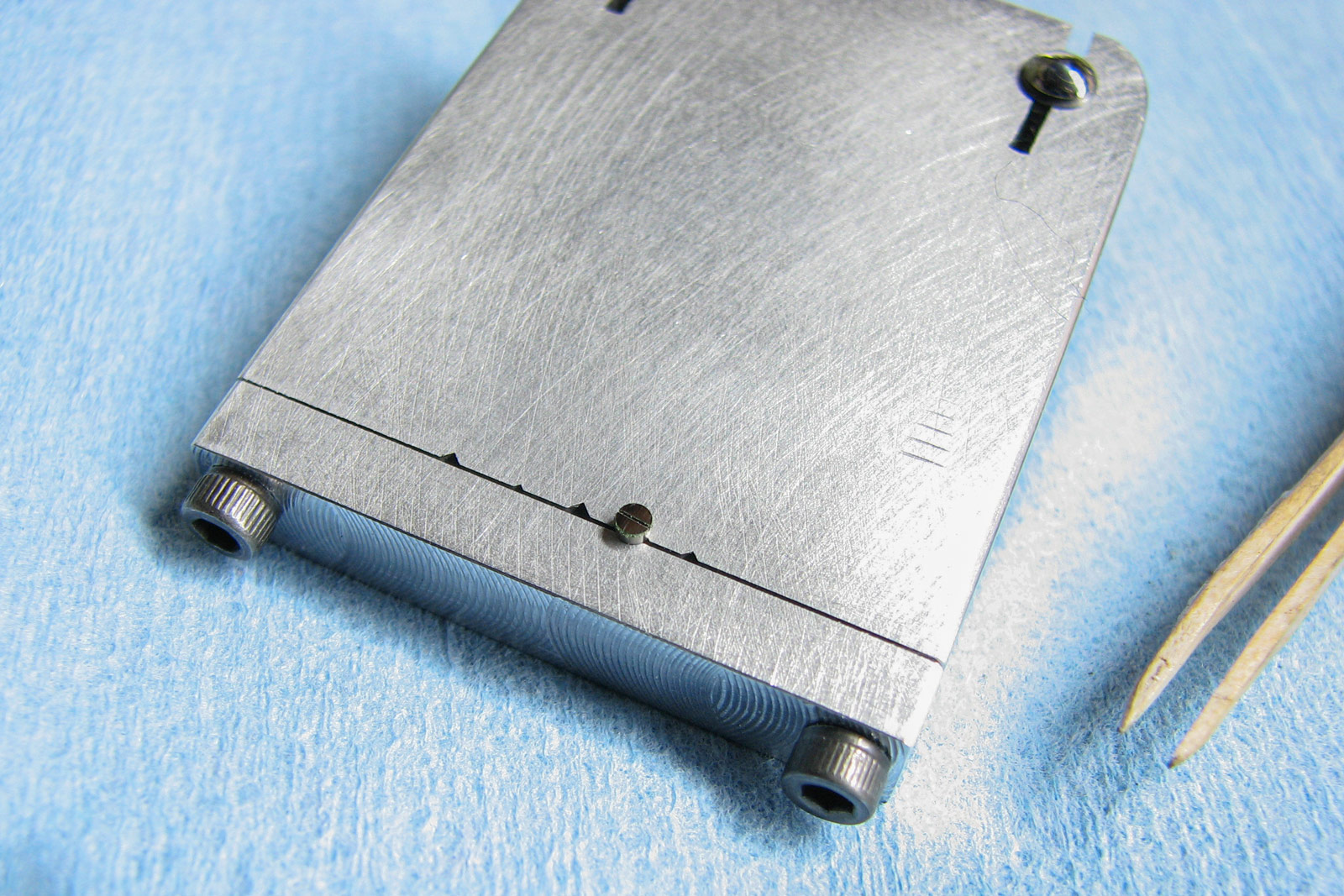
Mr Vicknair made the tool to hold screws to perform black polishing
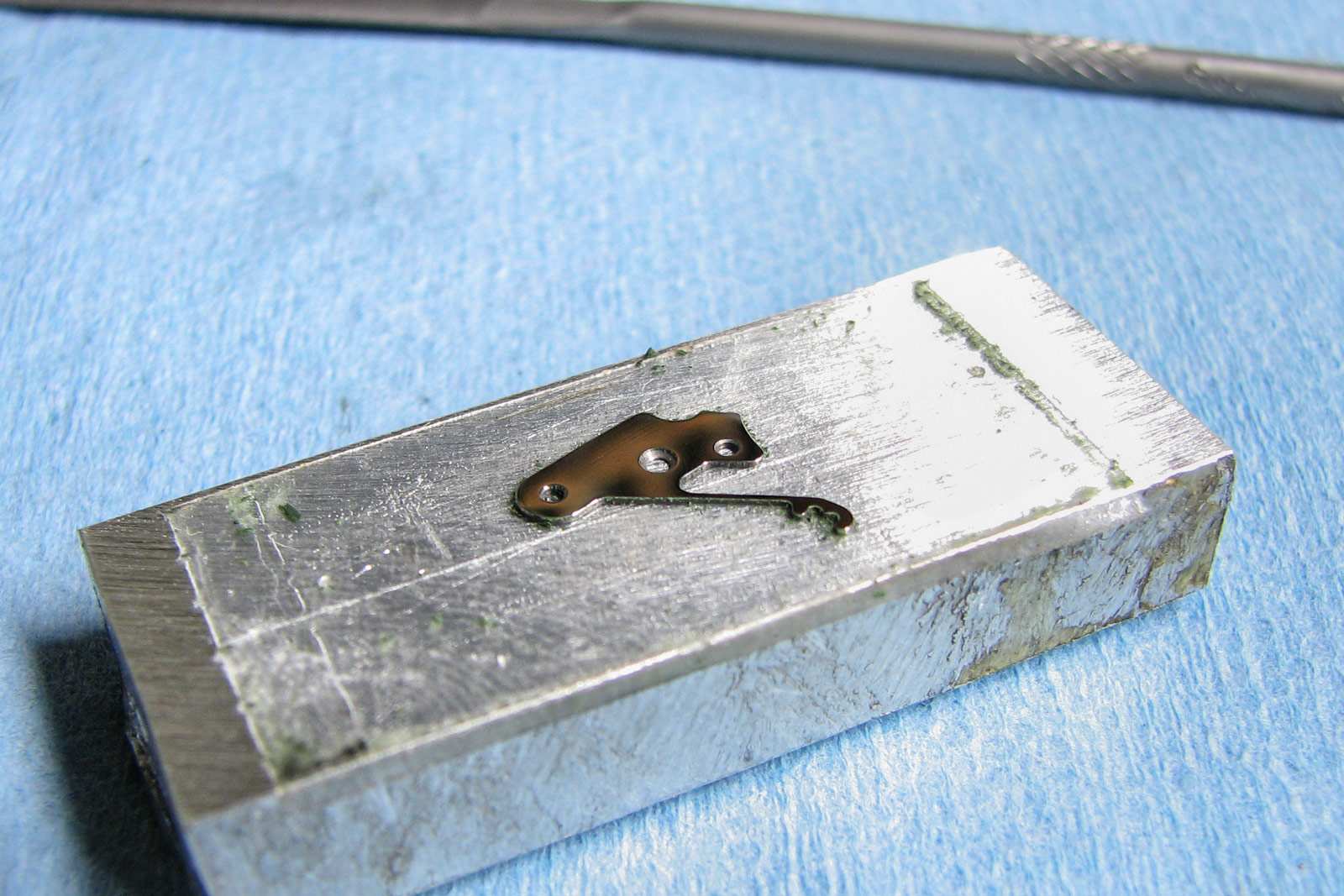
The lever of the keyless works is secured to a flat block for black polishing
Key facts and price
Dewey Vicknair Wristwatch
Diameter: 38.5 mm
Height: 11 mm
Material: Stainless steel
Crystal: Sapphire
Water resistance: 30 m
Movement: Based on Omega cal. 266
Functions: Hours, minutes, and seconds
Winding: Manual wind
Frequency: 18,000 beats per hour (2.5 Hz)
Power reserve: 35 hours
Strap: Calf-skin leather
Limited edition: Made to order
Availability: Direct from Mr Vicknair with lead time of one year
Price: Starting from US$28,000 but varies depending on customisation and materials
All images courtesy of Dewey Vicknair. For more, contact Mr Vicknair at Vicknairrestorations.com.
Back to top.


